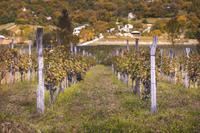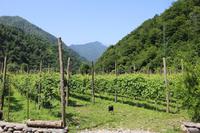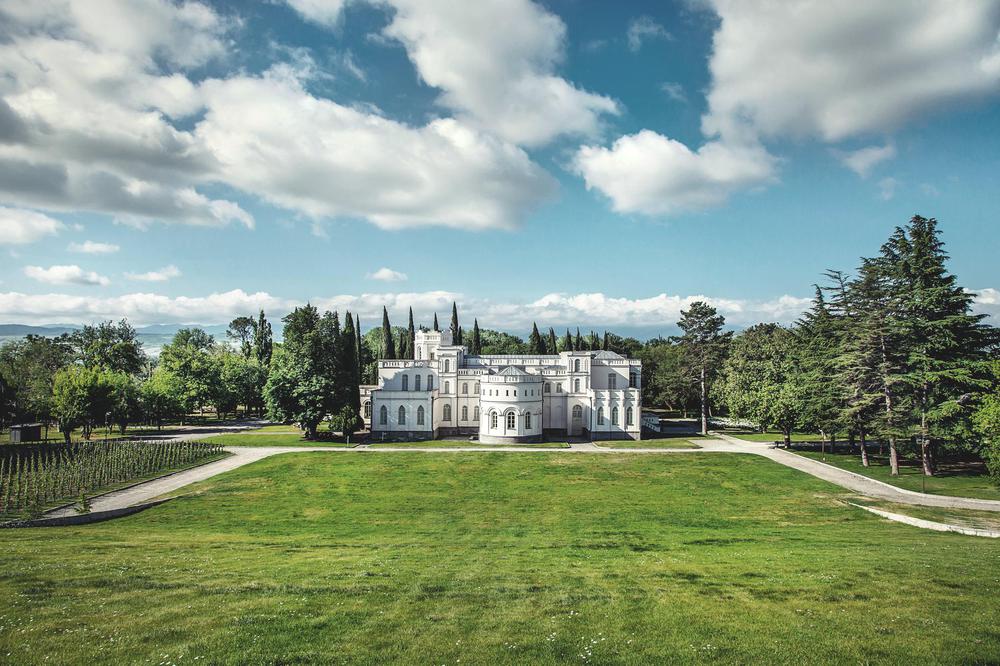Nestled in western-central Georgia, the Imereti Wine Region is a treasure trove of viniculture, distinguished by its diverse climatic and soil conditions. Covering an area of 6,475 square kilometers (2,500 square miles), and home to 536,052 residents as of the 2014 census, Imereti is not just a hub for wine enthusiasts but also a cultural landmark with its unique Georgian dialect. This article delves into the distinctive features of the Imereti Wine Region, exploring its geographical setting, climate, soil types, grape varieties, and signature wines.
Geographical And Climatic Influence
Imereti, situated along the middle and upper reaches of the Rioni River, is bordered by significant natural landmarks like the Likha Ridge, the Meskheti Mountains, and the Caucasus Ridge. The region’s altitude ranges from 50 to 500 meters (164 to 1640 feet) above sea level, offering a variety of mesoclimates conducive to viticulture. The inland position of Imereti results in a humid subtropical climate, largely shielded from the Black Sea’s influence. This climate, characterized by cold, wet winters and hot, dry summers, is ideal for grapevines, allowing them to store water and nutrients efficiently and achieve full ripeness before harvest.
Soil Diversity And Grape Varieties
The soil in Imereti is as diverse as its climate. Vineyards are typically found on stony loams rich in calcium carbonate and limestone, creating perfect conditions for white wine grape varieties. Native grapes like Krakhuna, Tklapa, Bazaleturi, and Kapistoni flourish here, but the blend of Tsolikouri and Tsitska grapes steals the spotlight. Tsitska, in particular, is favored for sparkling wine production in Imereti. Despite the dominance of white grapes, red wine grape vineyards, mainly Rko and Otskhanuri-Sapere, have seen a rise in recent years. Traditional and modern winemaking techniques are employed in the region, including the ancient method of fermenting and aging wine in clay qvevri (locally known as churi) buried underground.
Signature Wines And Protected Designations
Imereti is proud of its lone PDO (Protected Designation of Origin), Sviri, centered around the village of the same name. Sviri wines are dry whites, produced predominantly from Tsolikouri, Tsitska, and Krakhuna grapes. Other notable wines from the region include Sviri Krakhuna, Obchuri Tsolikouri, and Kvalituri Tsitska. The winemaking process in Imereti often involves leaving the wine in the churi for an additional two months post-fermentation, before transferring it to barrels.
Viticultural Heritage And Population
The Imereti Wine Region is more than just a center for wine production; it's a region steeped in cultural and demographic uniqueness. With a population density of 83 people per square kilometer (210 per square mile), Imereti's residents are predominantly Georgian, speaking a local dialect that adds to the region's rich cultural tapestry. This demographic aspect is crucial as it directly influences the viticultural practices and traditions of the area. The traditional use of the churi for wine fermentation and aging is a testament to the region's deep-rooted wine-making heritage, a practice that has been preserved and passed down through generations.
Diversity In Grape Varieties
Imereti's viticultural richness is further highlighted by its extensive range of grape varieties. Alongside the popular Tsolikouri, Tsitska, and Krakhuna, the region cultivates a wide array of both white and red grapes, including Adanasuri, Aladasturi, Argvetuli Sapere, Bazaleturi, Bzvanura, Dondghlabi, Dzelshavi, Kundza, Kvishkhuri, Otskhanuri, Rko, Sapere, Thiska, Tklapa, and Vani Chkhaveri. This diversity not only showcases the region's adaptability to different grape varieties but also contributes to the unique profiles of Imereti wines, distinguishing them in the global wine market.
Imereti's Place In Georgian Winemaking
Positioned as one of the five main viniculture regions in Georgia, Imereti's role in the country's winemaking narrative is significant. Its unique climatic and soil conditions, coupled with traditional and modern winemaking techniques, place Imereti wines in a league of their own. The blending of historical practices, like the use of churi for fermentation, with contemporary techniques, illustrates the region's adaptability and respect for tradition.
Conclusion
The Imereti Wine Region, with its distinct geographical features, diverse climate and soil types, a wide range of grape varieties, and a blend of traditional and modern winemaking practices, stands as a pivotal player in Georgia's rich winemaking history. The region offers a unique experience not just for wine lovers but also for travelers seeking to immerse themselves in a culturally rich and historically significant destination.

 Exploring the Cradle of Wine
Exploring the Cradle of Wine
 Georgia's 29 Wine Appellations
Georgia's 29 Wine Appellations
 Kakheti Wine Region
Kakheti Wine Region
 Kartli Wine Region
Kartli Wine Region
 Racha Wine Region
Racha Wine Region
 Adjara Wine Region
Adjara Wine Region
 Samegrelo Wine Region
Samegrelo Wine Region





